Part of a series of articles titled Curiosity Kit: Susan B. Anthony .
Previous: Learning From Susan B. Anthony
Article
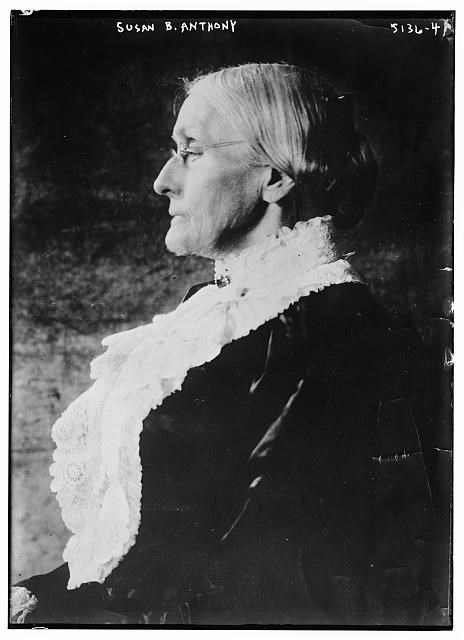
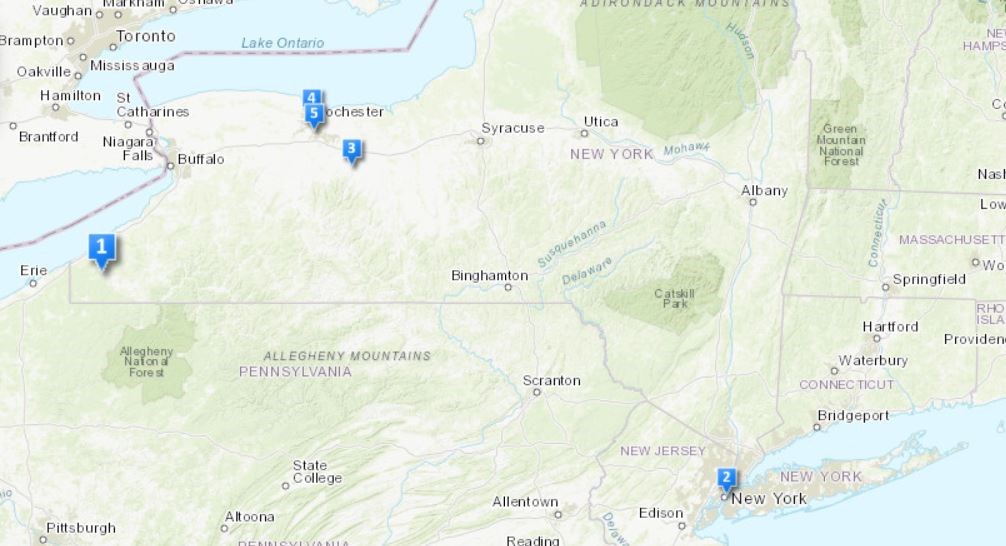

In 1854, Anthony spoke at the Chautauqua County Women's Rights Convention in southwestern New York. She returned on July 25, 1891, to speak at the first annual Political Equality Day at the Chautauqua Institution. Anthony was joined by Zerelda G. Wallace and Rev. Dr. Anna Howard Shaw. The county’s Political Equality Club organized the event. This organization advocated for women’s political rights, including suffrage for white women. They held petition drives and large public events, and supported state suffrage legislation.
The Chautauqua Institution Historic District is listed in the National Register of Historic Places.
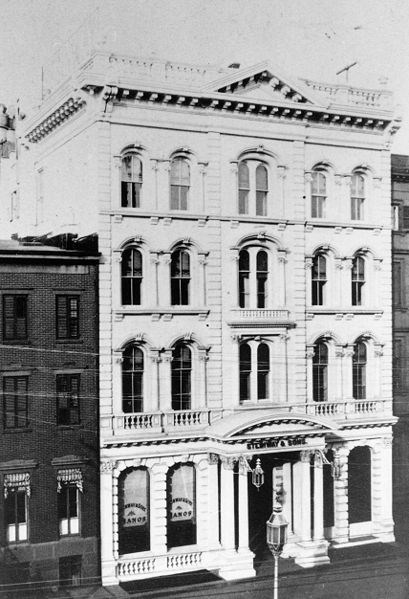
The American Equal Rights Association (AERA) was founded at the Church of the Puritans in May 1866. It disbanded at Steinway Hall three years later. Both buildings are no longer standing; their former sites are within New York City's Union Square, a National Historic Landmark.
The AERA splintered over support for the Fifteenth Amendment, which granted the vote to Black men only. Anthony, Stanton, and Frederick Douglass disagreed about whether African Americans or women had a more urgent need for the vote. Despite Douglass’s strong support for women’s voting rights, Anthony and Stanton felt that he abandoned the suffrage movement by supporting the Amendment. They left the AERA and established the National Woman Suffrage Association, whose sole focus was women’s voting rights. Likewise, Douglass was hurt by their insults against African Americans and lack of support for African American causes.

In 1872, Anthony and fourteen other women attempted to vote in the presidential election. A poll watcher challenged the legality of their vote. Anthony argued that she could vote because of the Fourteenth Amendment, which granted citizenship to anyone born or naturalized in the United States. Anthony was put on trial at the Ontario County Courthouse. She argued that if women were citizens, they already had voting rights. The judge disagreed and fined Anthony $100. Without jail time, she could not appeal. Three years later, the US Supreme Court ruled that citizenship did not guarantee the right to vote in Virginia Minor v. Happersett.
The Ontario County Courthouse is listed in the National Register of Historic Places.
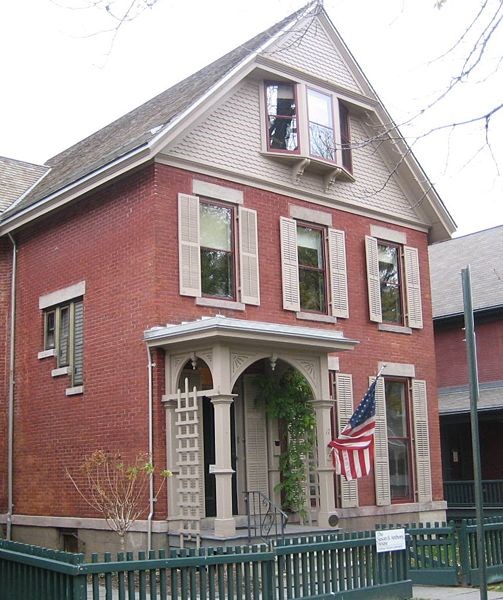
For forty years, the Susan B. Anthony House served as Anthony’s home and political headquarters. It is now a National Historic Landmark.
First owned by her mother Lucy and later her sister Mary, it was home to many members of the Anthony family. After attempting to vote in 1872, Anthony was arrested in the house’s front parlor. Twenty years later, the first-floor parlors became public offices for NAWSA. When Anthony was elected president in 1892, the house became the organization’s headquarters. On March 13, 1906, Anthony died of heart failure and pneumonia in her home.
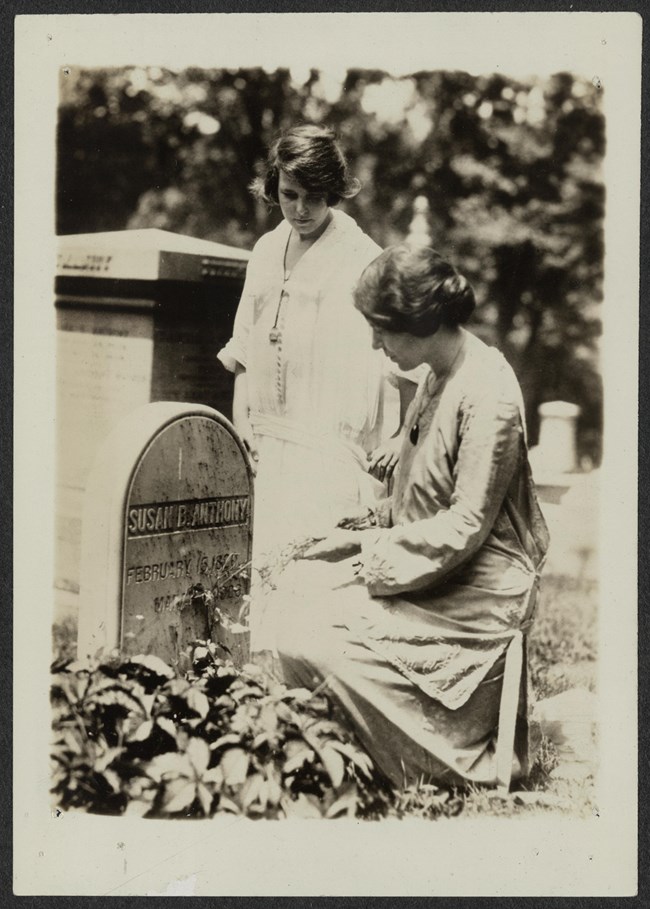
After her death, Anthony was buried at Mount Hope Cemetery in Rochester, New York. She dedicated decades of her life to a constitutional women’s suffrage amendment, but died fourteen years before this became a reality. In 1920, the ratification of the Nineteenth Amendment made it illegal to deny the vote based on sex. As a tribute to her work, the Nineteenth Amendment was called the Susan B. Anthony Amendment. In recent years, voters have left their “I Voted” stickers as memorials at Anthony’s gravesite on Election Day.
Mount Hope Cemetery in listed in the National Register of Historic Places.
Selected Sources:
Dwyer, Colin. “‘I Voted’ Stickers Pile Up In Emotional Tribute At Susan B. Anthony's Grave.” NPR. Published November 6, 2018, 8:21 PM ET.
Goodier, Susan and Karen Pastorello. Women Will Vote: Winning Suffrage in New York State. Ithaca, NY: Cornell University Press, 2017.
National Park Service. “Fighting for Suffrage: Comrades in Conflict.” Suffrage in America: The 15th and 19th Amendments. Accessed August 1, 2020.
National Park Service. “Susan B. Anthony.” People. Accessed August 1, 2020.
Part of a series of articles titled Curiosity Kit: Susan B. Anthony .
Previous: Learning From Susan B. Anthony
Last updated: May 19, 2021